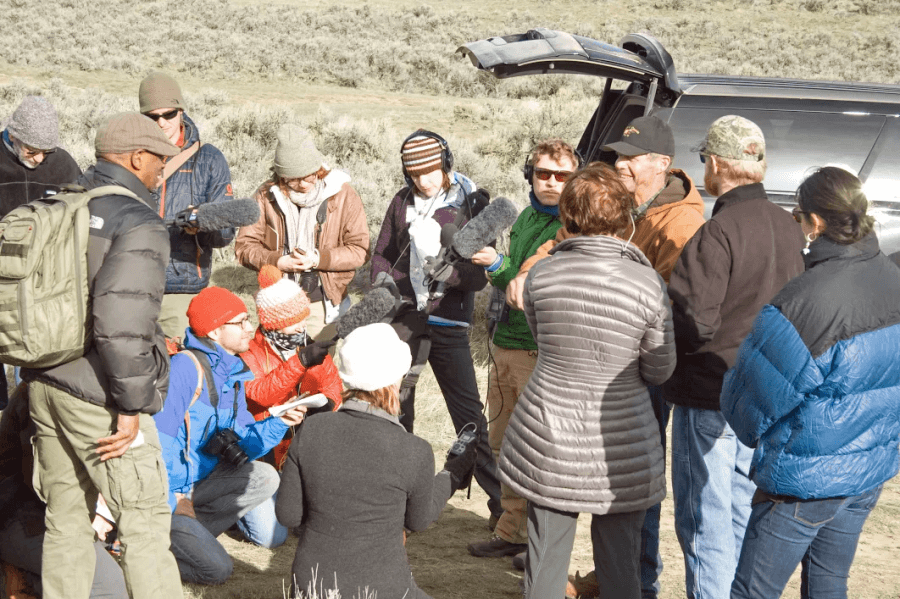Written by Sasha Nelson, Field Organizer based in Northwest Colorado
 Our Conservation Colorado team scored a major touchdown on September 22, when Interior Secretary Sally Jewell announced that Greater sage grouse do not need the protection of the Endangered Species Act. That same day, the Bureau of Land Management released Records of Decision for their grouse management plans.
Our Conservation Colorado team scored a major touchdown on September 22, when Interior Secretary Sally Jewell announced that Greater sage grouse do not need the protection of the Endangered Species Act. That same day, the Bureau of Land Management released Records of Decision for their grouse management plans.
At Conservation Colorado, we have been working for over a decade to conserve sagebrush landscapes that are important habitat for grouse and over 350 other plants and animals. Our engagement on this issue has extended far beyond policy and politics; we’ve developed a successful economy around grouse tourism, aided in essential scientific data collection, and put boots on the ground to affect meaningful conservation measures.
Wins:
1. The Bureau of Land Management’s Northwest Colorado plan for Greater sage grouse closes all areas within one mile around active Greater sage grouse leks to new fluid mineral leasing.
2. 80,600 acres of Greater sage grouse habitat on state land have been protected by the state of Colorado.
3. 926,700 acres of BLM and Forest Service land in Colorado have been designated as “Priority Habitat Management Areas” and will be managed to limit or eliminate surface disturbance.
4. 742,900 acres of BLM and Forest Service land in Colorado are now designated as “General Habitat Management Areas”, meaning that habitat impacts from development will be avoided, minimized and compensated.
5. Governor Hickenlooper’s 2015 Executive Order on sage grouse establishes the “Colorado Habitat Exchange”, a program to allow private landowners and industry to work together to create a program of compensatory mitigation.
6. As a result of the collaborative conservation that has already occurred and favorable weather conditions, Greater sage grouse populations have already increased by 60% in Northwestern Colorado the past few years.
Secretary Jewell’s recent announcement and the release of these critically important plans are as exciting to many of us as a Broncos touchdown. And while we’re spiking the ball and doing a funky chicken dance in the end zone, it’s important that we don’t leave the ball at the line of scrimmage.
In the coming years, US Fish and Wildlife Service will review our collective progress by periodically assessing the health of the Greater sage grouse population. If we don’t continue to see real recovery of the species, an ESA listing could be revisited. So for this work to really matter, we must play through the 4th quarter for the win.
Work still to be done:
1. Continue bringing people together to conserve sagebrush.
Continue bringing people together to conserve sagebrush.
2. While we will no longer offer grouse lek tours, we will continue to work side by side with local business owners to further develop the economic model of Greater sage grouse tourism.
3. Hold the Governor, federal agencies, and local managers accountable to successfully implement these new management plans on state and federal lands.
4. Ensure projects like Transwest Express and Gateway South Transmission lines are done in a way that either avoids harm to our fragile landscape or provides meaningful mitigation measures on public land.
5. Continue to work towards permanent, landscape-level protections for Greater sage grouse habitat in Western Colorado.
So please join us as we keep our eye on the ball and continue to work toward permanent conservation of sage grouse landscapes.
For wild Colorado,
Sasha Nelson



